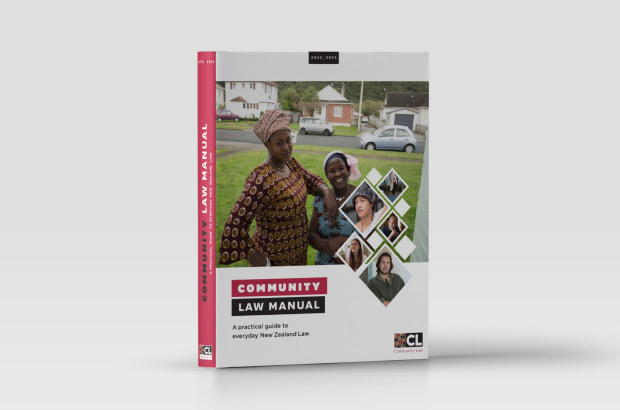Trees
Overhanging tree branches and encroaching roots
The law allows you to cut back any branches or roots from neighbours’ trees that are encroaching on your property. First, though, it’s always best to talk to your neighbour to see if you can agree on a solution.
If a neighbour’s tree is dangerous or is blocking your view or light, you can apply for a special type of District Court order to get the tree removed or trimmed.
Note: Some trees are protected by the Resource Management Act 1991 or your local District Council’s bylaws. Sometimes, a tree on private property will have protected status. The status of a tree should be checked with the local authority before work starts.
Can I cut back branches or roots encroaching from my neighbour’s property?
Case: (2004) 5 NZCPR 520 (HC)
Yes. When branches or roots of trees encroach from a neighbour’s property, you can cut back the parts of the tree that are encroaching, as far as the neighbour’s boundary.
Can I pick overhanging fruit or flowers?
No. Fruit or flowers growing on overhanging branches belong to the owner of the tree, and so you should not pick them, even though they’re over your side of the boundary.
What if encroaching branches or roots are damaging my property?
Case: [2012] NZDT 187 (a Disputes Tribunal example)
If the encroaching parts of the tree are causing you damage, you can remove the branches or roots and go to the Disputes Tribunal or the District Court to claim the cost of doing that work and of repairing the damage caused to your property.
You can also apply to the District Court for an order to have the tree removed or trimmed and the damage repaired, and for the neighbour to pay the cost (see the next section).
Trees that are dangerous or blocking your view: Getting a District Court order
What can I do if a neighbour’s tree is dangerous or blocking the view or light?
Property Law Act 2007, ss 332(b), 335(1), 336(2), 337(1)-(2)
Like all issues with neighbours, it’s best to talk to your neighbour first to see if you can work out a solution. If that doesn’t work, you can apply to the District Court for it to order your neighbour to trim or remove the tree. In this context, “tree” here includes any kind of shrub or plant.
How will the judge decide whether to order the tree to be removed or trimmed?
The judge will only grant you the order if they’re convinced it’s fair and reasonable to remove or trim the tree and that doing this is necessary to remove or prevent one of the following problems:
- a risk to someone’s life, health or property
- any unreasonable (“undue”) obstruction of your view
- any unreasonable interference with your ability to grow trees or crops
- any unreasonable interference with your use and enjoyment of your property caused by fallen leaves, flowers, fruit or branches, or because the tree is interfering with light, or
- any unreasonable interference with your drains or gutters caused by fallen leaves and so on, or by the tree’s roots.
The judge also has to be satisfied that the hardship you’d be caused if the tree isn’t trimmed or removed is greater than the hardship this would cause your neighbour.
Cases: (2005) 5 NZCPR 520 (HC) at p 22
[2016] NZDC 9207 Property Law Act 2007, s 336(2)
Note: In general, judges are cautious about making these orders.
There are also a range of other factors the judge has to take into account, if they’re relevant in your particular case – these include:
- Māori cultural values
- the public interest in maintaining an “aesthetically pleasing” (beautiful or attractive) environment
- the importance of protecting public reserves that have trees
- whether the tree has historical, cultural or scientific significance
- any effect that removing or trimming the tree would probably have on ground stability, the water table or run-off
- whether the problem already existed when you first bought or rented the property – but if the problem was already there, that in itself won’t prevent the judge making the order if they think this is still appropriate given all the circumstances.
Note: If a tree is protected by the Resource Management Act 1991, the judge can only order it to be removed or trimmed if it’s a risk to someone’s life, health or property.
Who pays for the work if my neighbour is ordered to remove or trim the tree?
Property Law Act 2007, ss 333, 337(1)(2), 338
If you’re granted the order for your neighbour to remove or trim their tree, you’ll have to pay the reasonable cost of getting the work done, unless because of the neighbour’s behaviour the judge thinks it’s fair to order them to pay some or all of the costs.
The judge can also order your neighbour to compensate you for any damage that happens while their tree is being removed or trimmed.
The rules about who pays are different if your neighbour doesn’t carry out the court order, so that you have to do the work yourself.
What if my neighbour doesn’t obey the court order to remove or trim the tree?
Property Law Act 2007, ss 338(1), (3), (5)
Your neighbour has 20 working days to carry out the court order, unless the judge gives them more time. If the neighbour hasn’t done the work within the required time, you can ask the neighbour or the judge for permission to go onto their property and do the work on the tree yourself. You’ll then be entitled to recover the full cost of the work from your neighbour.
Trees and power lines
Power companies can require property owners to trim trees back from power lines
Electricity (Hazards from Trees) Regulations 2003, regs 9–11 Electricity (Hazards from Trees) Regulations 2003, regs 19–22
Trimming trees near power lines is dangerous, and you should always contact the power company first.
However, legally it’s your responsibility to make sure trees growing from your property keep the right distance from power lines. Power line owners (usually the power companies) can give you a notice requiring you to cut or trim a tree that’s too close to power lines, and they can require you to pay for the work.
You can ask the power line owner for an exemption (“dispensation”) from cutting or trimming the tree, if you can argue that the tree isn’t your responsibility or that it’s unlikely to cause a hazard. If you and the power line owner can’t agree on this, you can ask an arbitrator to make a decision.


